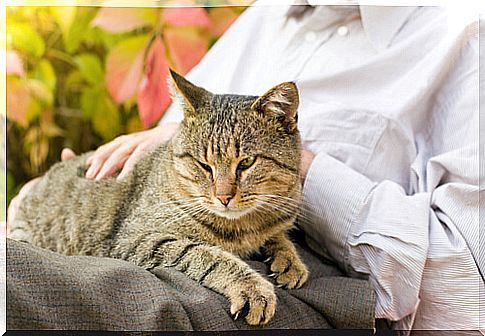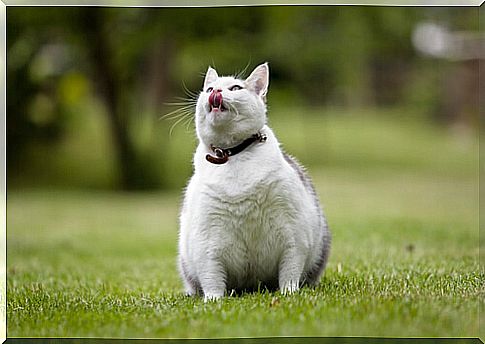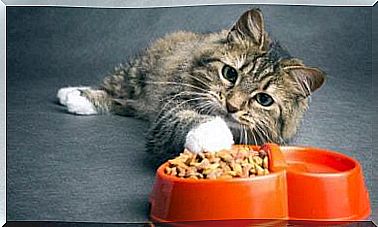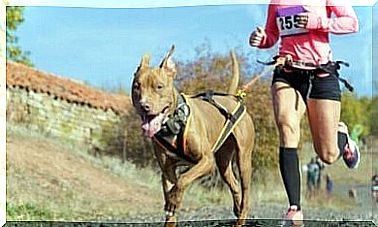Signs Of Aging In Cats

As with humans, animals also age and their bodies show signs of this. Animals in general live less than humans and age in less time; for this reason and sometimes it is not realized that even if a cat is only 6 years old, it has already entered the phase of old age. Here are some signs of aging in cats, so you can recognize the symptoms that indicate that your dear friend can no longer do everything he did before.
White hair
The first sign of aging in cats is white hair. As with humans, cats’ fur gradually turns gray over time. Solitary white hairs will begin to appear on the muzzle and on the back or in the paws, and then gradually extend throughout the body, even if the fur will never come to be completely white.
Lack of movement
Another sign of aging in cats is that they become lazier, need more sleep and struggle to move. The level of physical activity decreases as well as the pace of the game, but they can still continue to play even if with less intensity.
Dental problems
With age , cats’ teeth will become weaker and even fall out, making the chewing phase more difficult (it will also have more difficulty when hunting, if it is a farm cat).
At the same time, cats with a lot of tartar can suffer from gingivitis (inflammation of the gums), or stomatitis (inflammation of the mucous membrane of the oral cavity), causing the feline pain when he eats food that can be so annoying that it prevents him from finishing the meal. . The ideal thing to do is to periodically check your cat’s mouth to check for tartar or any inflammation of the gums. In addition, it is important to provide them with proper nutrition based on natural feed or raw food.
Joint pains

Another important signal is when the cat stops doing its business in the litter box and goes to the side of it. This phenomenon may be due to pain in the joints or muscles of the hind legs and hips, which many cats suffer from in old age. In this way, not only will the cat stop climbing on chairs, tables or even its scratching post, but it will no longer be able to enter the litter box due to pain in its hind legs. Also, due to the type of sand in the litter, it will not be able to balance itself. The fact that he does his needs on the side of the box indicates that the cat, despite having every intention of doing it in the sand, is in great difficulty. In these cases it will be necessary to change the type of sand in the litter.
Loss of consciousness
Older cats, as well as people, can gradually lose their senses, smell, hearing and sight. This causes a decrease in the degree of attention on the part of our little friends, awkwardness in the movements and short temper. Older cats also want to be quiet and tend to snort if you annoy them, especially if you try to pick them up all the time. Their sleep hours and their need for peace of mind must be respected.
Kidney problems
Older cats can also suffer from kidney failure and urinate outside the litter box, on horizontal, soft surfaces. If this phenomenon begins to appear, it is recommended to have a urinalysis to make sure that there is a real kidney problem. This problem, combined with the poor hygiene that usually appears with age, makes coexistence with an elderly cat difficult. In fact, at this stage of life, felines spend less time on their personal hygiene, either due to physical pain that prevent them from moving or due to problems with the mouth. For this reason, their fur tends to be less shiny and soft than that of a young cat.
Overweight

Due to a lack of physical activity, older cats tend to put on weight, but there is also a possibility that they suffer from diabetes. If they drink a lot of water and eat a lot but start losing weight anyway, they may have diabetes. In addition to taking your cat to the vet, you will need to strictly control his diet.
Tumors
A final sign or danger linked to age is that unsterilized cats tend to contract tumors more easily, especially in the breasts for females and prostate for males. Felines that have been spayed when they are young are at a lower risk of suffering from cancer.
There are many other symptoms that can indicate that our little friend is getting old. Many of them are symptoms of diseases that older cats suffer from, so when faced with any symptoms or changes in your pet’s behavior, it is important to take him to the vet right away.









